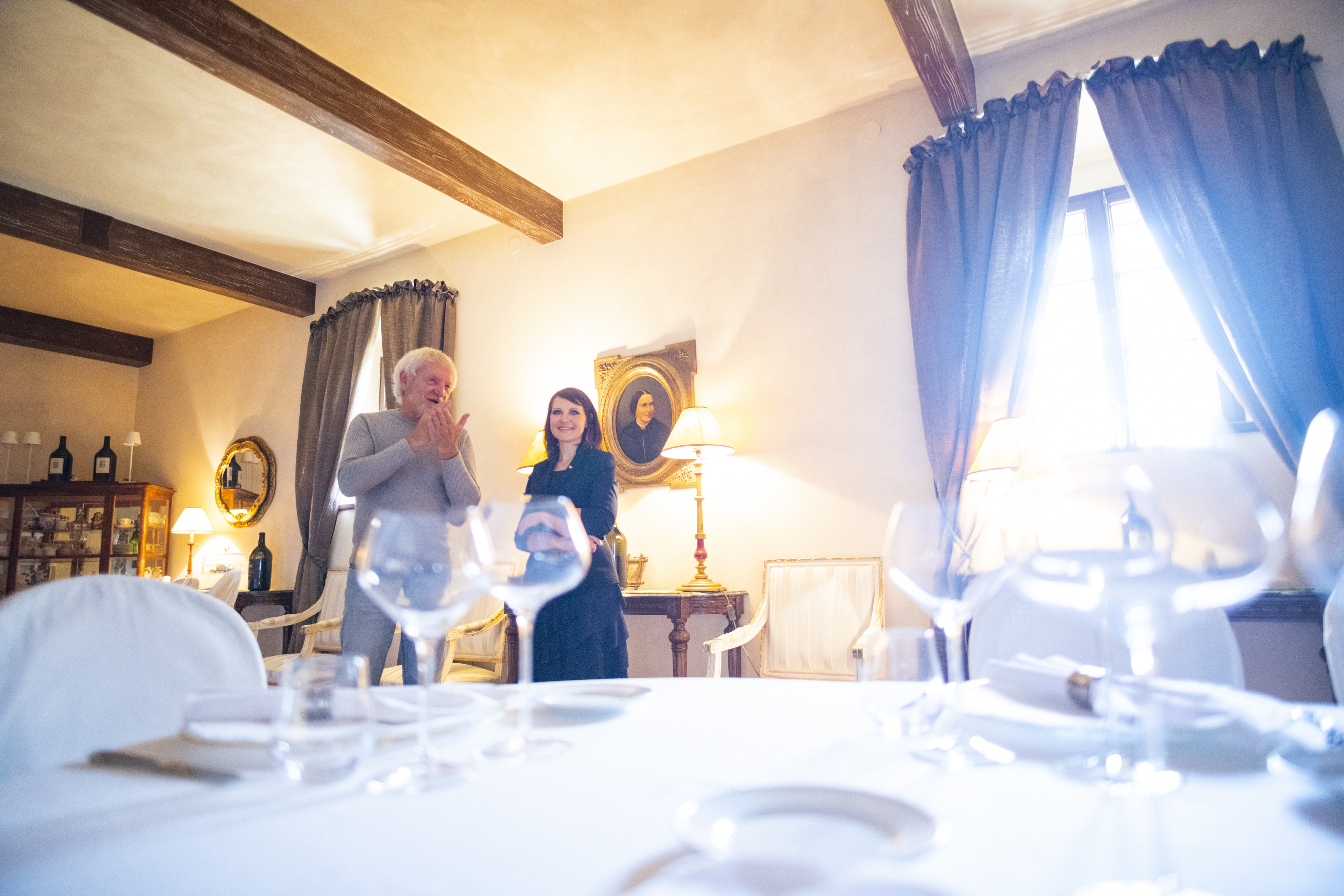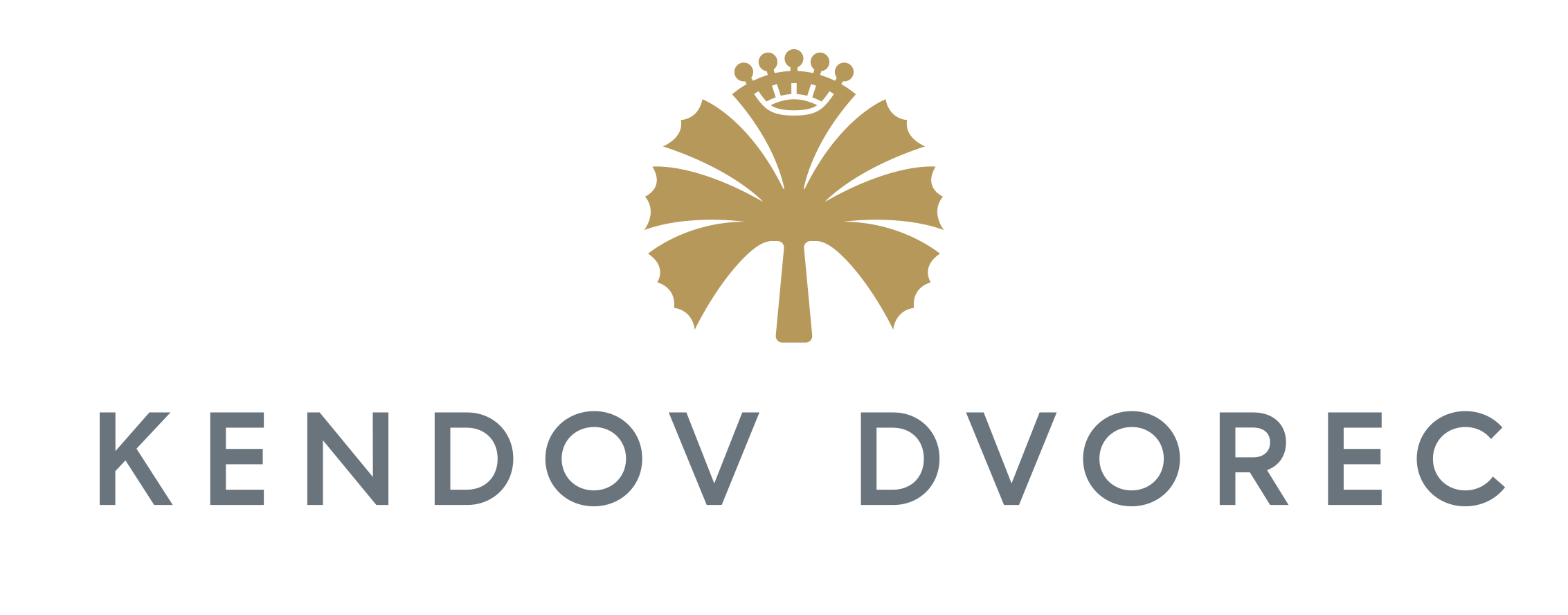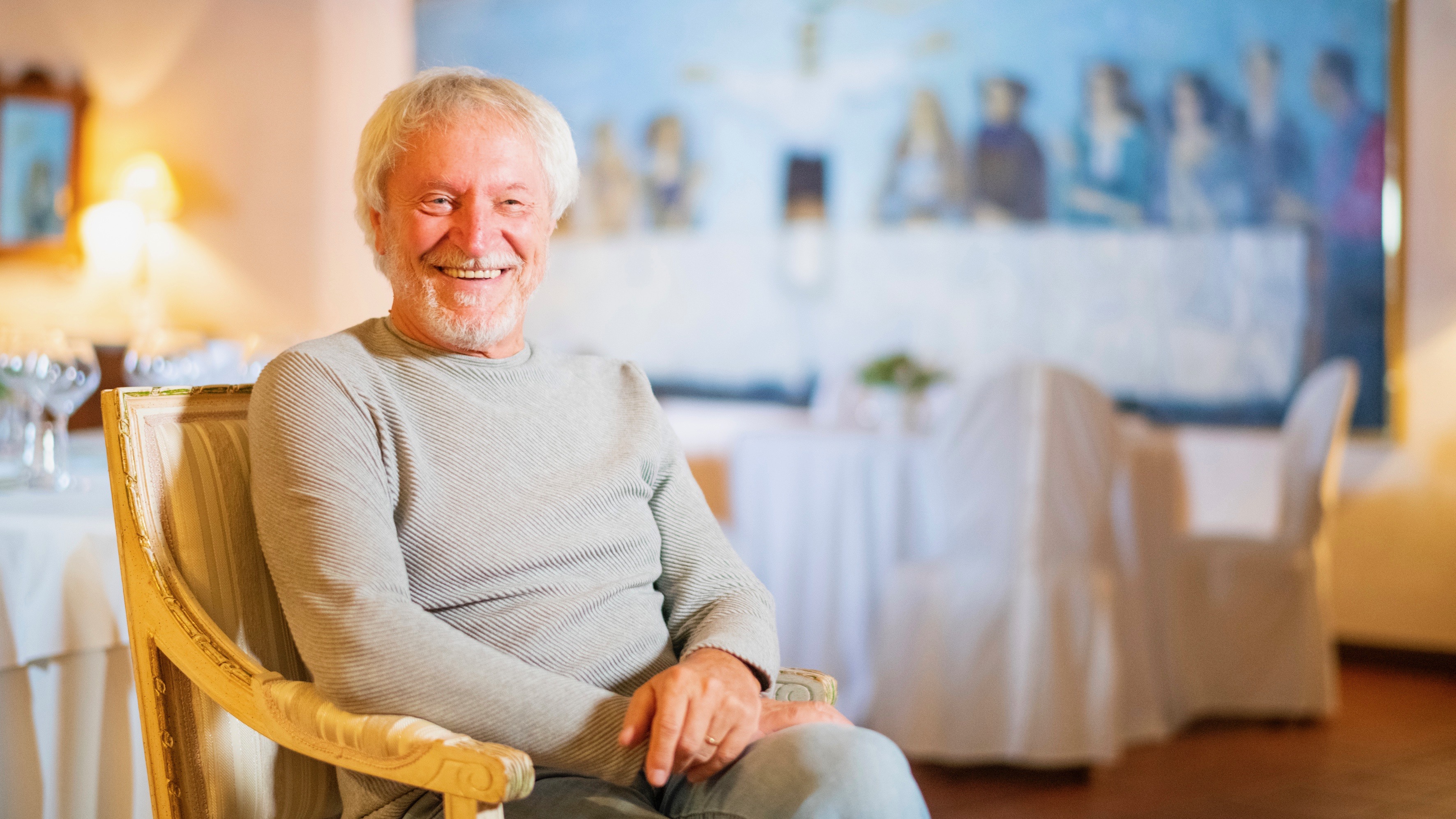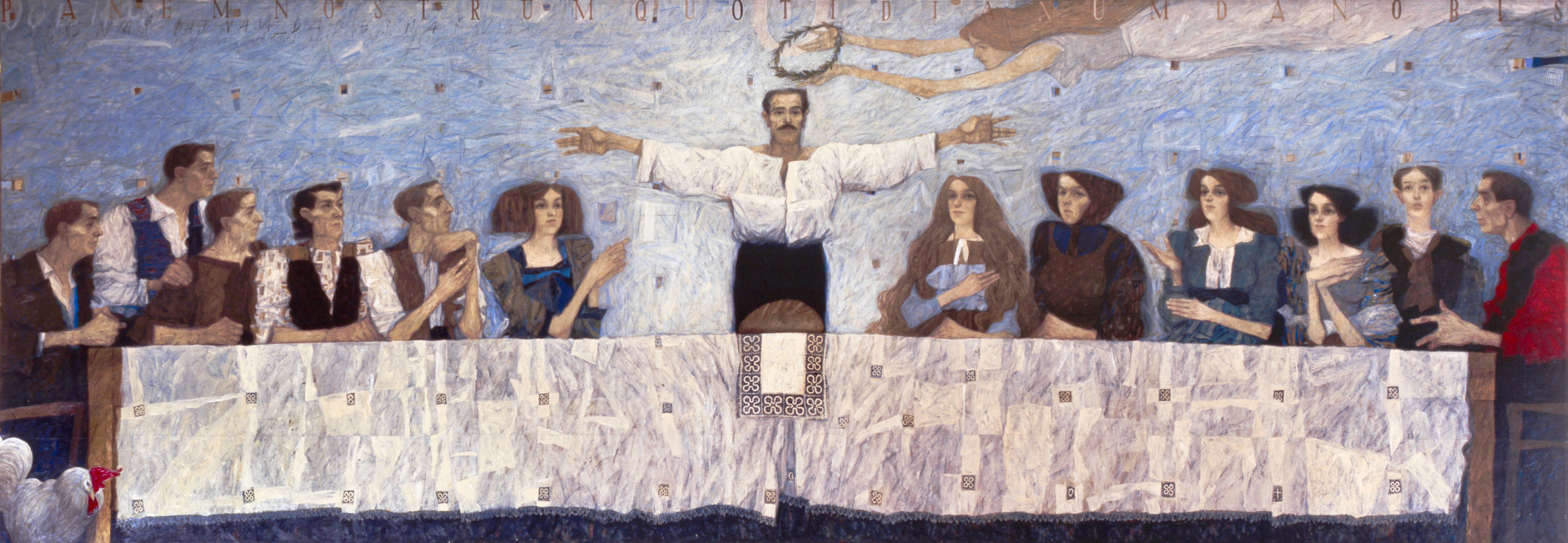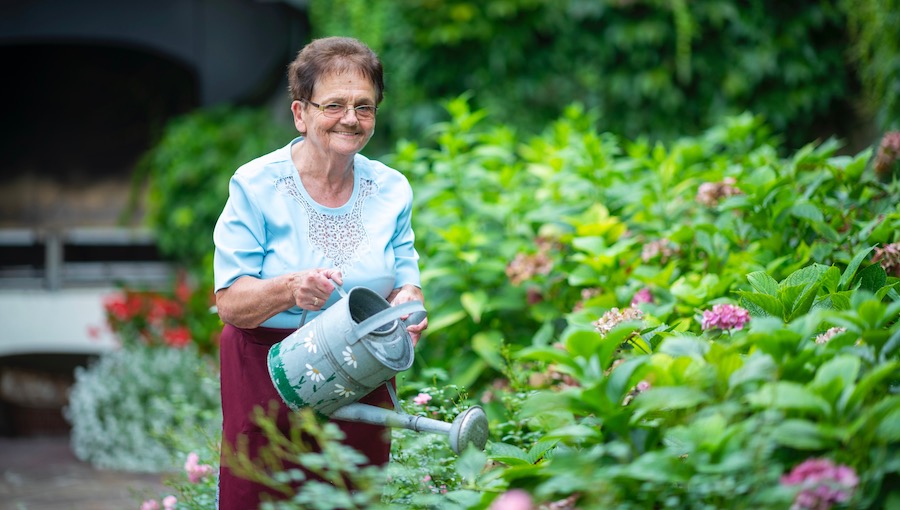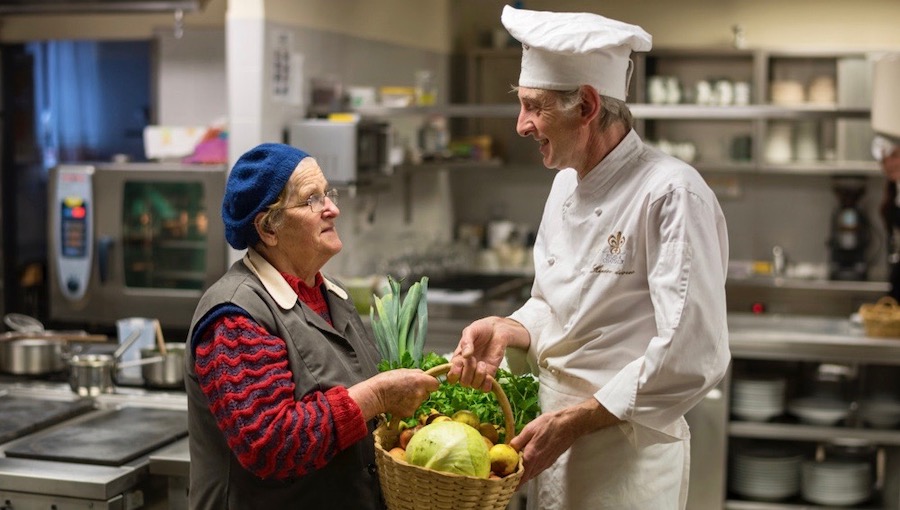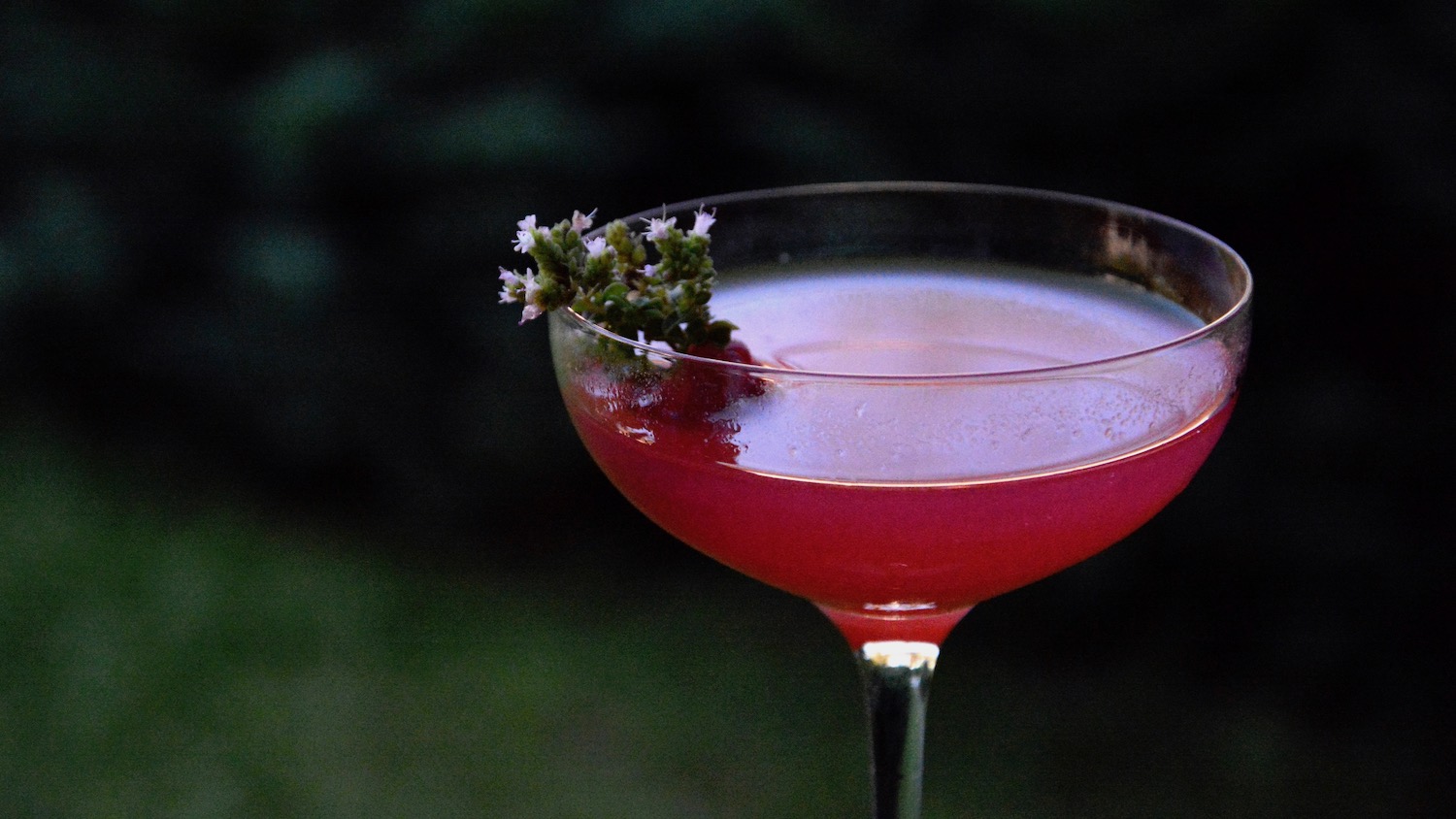The roots of the family depicted in the painting by Rudi Skočir date back several centuries, at least to 1377, when Kenda homestead was first mentioned in the land registry of the gastaldia of Tolmin.
Rudi Skočir: Give Us Today Our Daily Bread
Text: Helena Pregelj Tušar
Photo: Robert Zabukovec, Marijan Močivnik
Ever since Kendov Dvorec was opened a quarter of a century ago, Rudi Skočir’s distinguished work of art has adorned its largest room. Looking at the monumental painting, the viewer’s attention is first drawn to the landlord, a powerful central character handing out bread to his family on a beautifully set table decorated with Idrija lace. Sitting next to him are his wife, sons and daughters, farmhands and maidservants. A muse is placing a wreath on the landlord’s head in tribute to his work.
Rudi Skočir: Give Us Today Our Daily Bread (oil on canvas, 180 cm x 500 cm), Kendov Dvorec
Inscriptions in Latin and Slovenian are placed along the upper edge of the painting: Panem nostrum quotidianum da nobis – Our Father, give us today our daily bread. Rudi Skočir says that the inscriptions and symbols typical of his works help the viewer, directing him or her on a path that he thought of while creating the work.
The painting in Kendov Dvorec quickly evokes an association with one of the most famous and powerful works of art of all times, Leonardo da Vinci’s The Last Supper. When Rudi Skočir inquired about the Kenda family, the resemblance to the last supper sprung to mind completely by accident. He says:
“In the countryside, relationships were genuine. Everyone, family and farmhands and maidservants were invited to the same table. The landlord in the painting gives bread to everyone. Symbolically, he gives them well-being. We can see by his hands that the he was not a fine gentleman who owned the land, but a man who worked the land. His hands are the hands of a worker. The faces around him are also quite ordinary, I only dressed them up a little for the festive moment.”
The roots of the peasant family depicted in the painting by Rudi Skočir date back several centuries, at least to 1377, when Kenda homestead was first mentioned in the land registry of the gastaldia of Tolmin. The landlord is the only character in the painting that Rudi Skočir based on a real person, a land owner from the Kenda family from over a hundred years ago. All the other characters are imaginary. Even the colours have no symbolism, explains the author:
“I was asked why the rightmost character had a red shirt. Is he associated with Judas the traitor, does it have a political significance? I replied no. It felt proper in terms of composition to incorporate red colour there because on the opposite side there is a rooster with a red comb. It seems to me these two colours are talking to each other across the table.”
The rooster has a symbolic meaning but the author does not reveal it. He says a painter must keep some messages to himself.
Similar to the persons in the painting of Rudi Skočir, families, friends, businessmen and travellers gather in the room where the work is exhibited today. “It is amazing how many people I met through this painting,” says Rudi Skočir. French guests, who visited Kendov Dvorec years ago and saw his work, invited him to their home in Bordeaux when he was working in Paris. Since then, they have been friends, meeting regularly and discovering the beauties of both countries together.
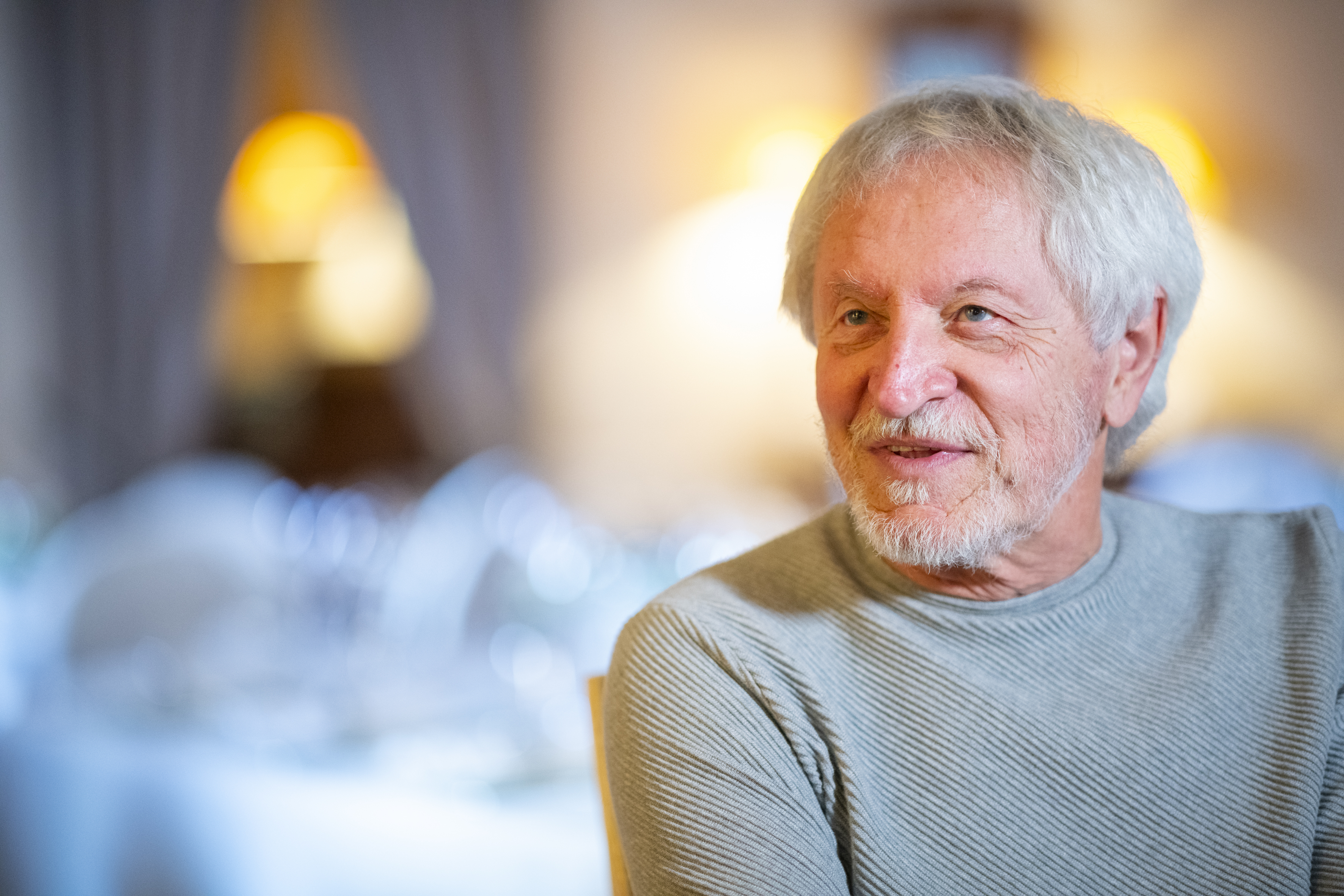
Rudi Skočir, a native of Kamno near Kobarid, who lived and worked in Idrija for many years, believes that a person of Idrija – be it a farm owner, miner or lace maker – is a special person. That is why he is inspired by such person:
“Sometimes these places were remote, inaccessible. The people who lived here had to work hard, or be very clever to succeed in other areas. At the same time, Idrija was a phenomenon because many intellectuals from other countries came here. Engineers, doctors, botanists were introducing an intellectual stream that was strong. People respected them.”
The painting Give Us Today Our Daily Bread was painted by Rudi Skočir in 1995, when Kendov Dvorec opened its doors to first guests after a thorough renovation in which Hidria invested. It was during these years that a lot of his paintings and graphic prints were created, by which he paid homage to the Idrija miners when the mercury mine was closed. He remembers:
“All these works share the image of the cross, the symbol of the end. At the time, everyone thought that it would be the end for Idrija, but a group of people emerged who saw an opportunity in the electrical industry. They went in that direction. Today, these companies are among the strongest in the world. I have a feeling that people in these places always get back on their feet.”
